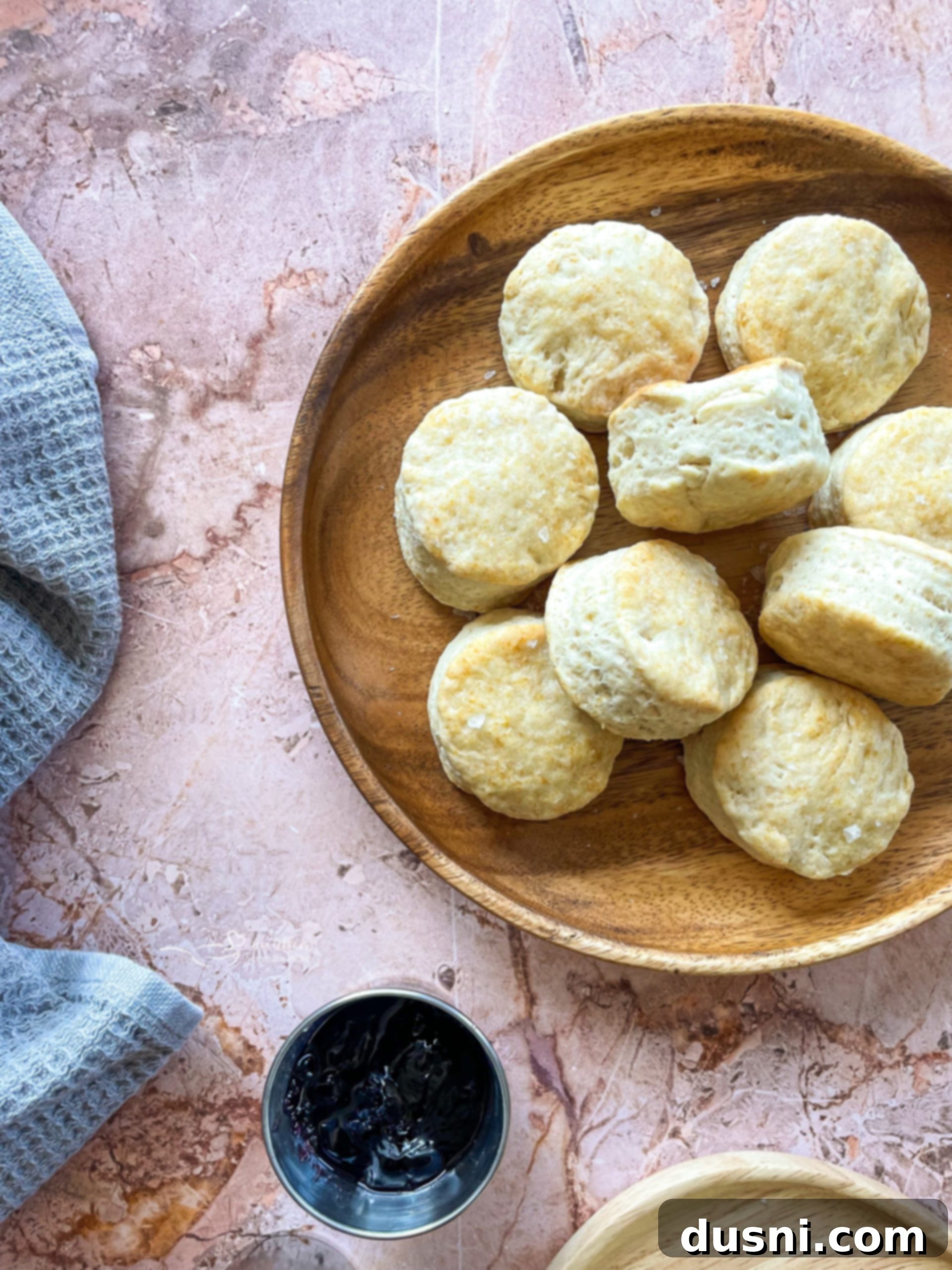Fluffy & Flaky Old-Fashioned Buttermilk Biscuits: Your Ultimate Comfort Food Recipe
There’s nothing quite like the aroma of freshly baked biscuits filling your kitchen. And when those biscuits are made with buttermilk, the result is pure magic: a comfort food staple that boasts irresistibly flaky layers, a subtle tangy flavor, and a perfectly golden-brown crust. With a soft, airy interior that practically melts in your mouth, these Old-Fashioned Buttermilk Biscuits are more than just a side dish; they’re an experience.
Imagine a crispy outside yielding to a tender, savory inside, delivering warmth and satisfaction with every bite. Whether you’re serving them for a hearty breakfast, an elegant brunch, or as the perfect accompaniment to a comforting dinner, these homemade buttermilk biscuits promise to elevate any meal. This classic recipe, passed down through generations, makes baking incredible biscuits accessible to everyone, even if you’ve never attempted them from scratch before.
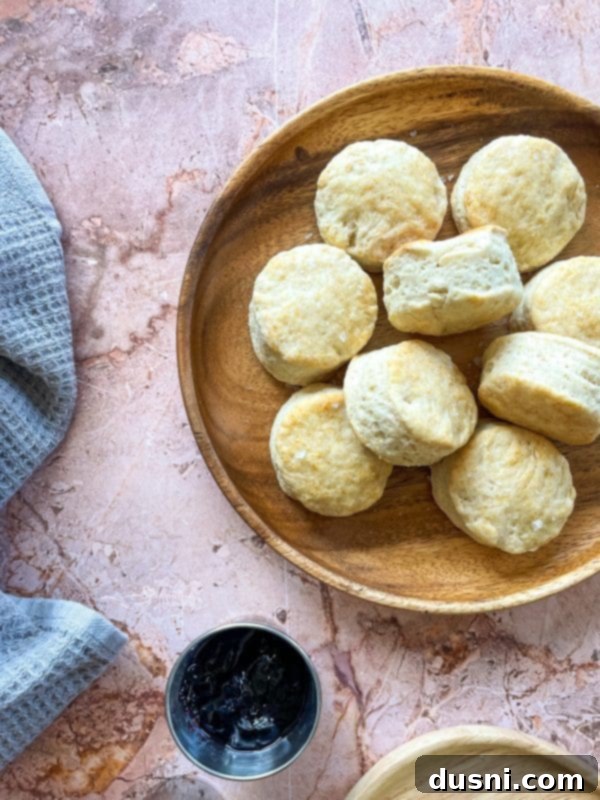
Embrace the Tradition: Making Buttermilk Biscuits from Scratch
If the thought of homemade biscuits seems daunting, let us reassure you: this recipe is designed for success. You don’t need years of baking experience to create soft, fluffy, and truly irresistible biscuits that are perfect for dipping, dunking, or soaking up delicious gravies. This particular recipe dates back to 1964, a testament to its enduring appeal and foolproof method. It proves that with just a few simple, wholesome ingredients, you can bake up old-fashioned buttermilk biscuits that taste just like Grandma used to make.
The beauty of this recipe lies in its simplicity and the incredible results it consistently delivers. Forget about store-bought mixes; once you experience the superior flavor and texture of these homemade gems, you’ll never look back. They’re not just food; they’re a piece of culinary history, a comforting tradition that brings people together around the table, embodying the true essence of Southern comfort cooking.

Versatile & Delicious: Perfect for Any Meal
One of the many reasons to love old-fashioned buttermilk biscuits is their incredible versatility. While they are a quintessential Southern breakfast item, their appeal extends far beyond the morning meal. I often find myself baking a fresh batch on a tranquil Sunday morning, knowing they’ll be the star alongside our traditional Sunday evening family dinner. Imagine them next to succulent Pork Chops With Mushroom Gravy or rich Braised Beef Short Ribs With Red Eye Gravy. They are absolutely ideal for soaking up every last drop of that savory goodness. The way their tender crumb absorbs the rich flavors of a hearty gravy is simply unmatched, making every bite a delight.
But their culinary journey doesn’t stop at dinner. These biscuits are equally delightful with just a smear of butter and your favorite fruit jelly or jam for a quick breakfast the next morning. They also make a fantastic midday snack, satisfying that craving for something warm, flaky, and wholesome. Their modest charm makes them suitable for a wide range of occasions, from casual family meals to more festive gatherings, proving that a truly great biscuit knows no time or place.
Planning Ahead: Freezing Homemade Biscuits
Don’t you just love having homemade goodness on hand for those busy days or unexpected guests? These buttermilk biscuits are excellent candidates for freezing. I highly recommend making a double batch whenever you bake, so you can always have a stash ready in the freezer. This culinary foresight means you’re prepared for impromptu dinner parties, sudden biscuit cravings, or simply when you need a quick, comforting side without starting from scratch. Freezing biscuits correctly preserves their texture and flavor, ensuring they taste freshly baked even weeks later. These biscuits freeze exceptionally well, maintaining their deliciousness for up to three months. Just thaw and reheat, and you’ll have warm, fluffy biscuits ready to serve in minutes.
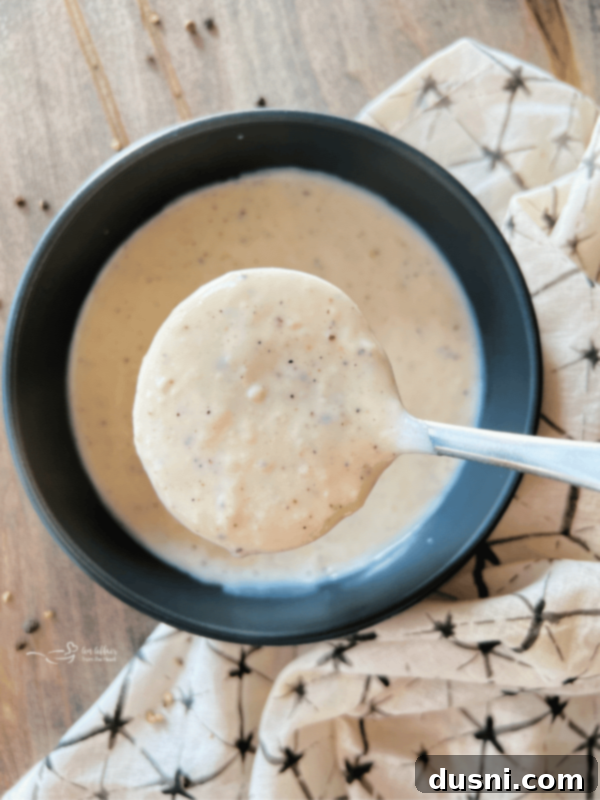
For the ultimate pairing, consider serving these biscuits with our Simple White Country Gravy Recipe. The combination is a true classic, epitomizing Southern comfort.
Expand Your Baking Horizons: More Bread Recipes to Love
If these buttermilk biscuits ignite your passion for baking, you might also enjoy exploring other delightful bread recipes. For something different yet equally satisfying, try these light and airy Olive Garden Breadsticks, this rustic and wholesome Peasant Bread, or this sweet and savory Honey Cornbread. Each offers a unique texture and flavor profile, perfect for expanding your repertoire and bringing more homemade goodness to your table.

Key Ingredients for Perfect Homemade Buttermilk Biscuits
The secret to incredible homemade buttermilk biscuits lies in a handful of simple, high-quality ingredients. Each plays a crucial role in achieving that coveted flaky texture and rich, tangy flavor. Below, we’ll discuss why these ingredients are essential for mastering this beloved recipe. You will find the complete recipe with precise measurements and detailed instructions in the printable recipe card at the bottom of this post.
- All-Purpose Flour: For this recipe, I use unsifted all-purpose flour. It provides the necessary structure for the biscuits without being too tough. The “all-purpose” designation means it has a moderate protein content, making it versatile for many baking applications. When measuring flour, always spoon it into your measuring cup and then level it off with a straight edge to avoid compacting it, which can lead to dry, dense biscuits. Proper measurement is key to a tender crumb.
- Baking Powder and Baking Soda: These are your primary leavening agents, working in tandem to create the perfect rise. Baking powder is a double-acting leavener, meaning it creates lift both when mixed with liquid and again when exposed to heat in the oven. Baking soda, an alkaline ingredient, reacts with the acid in the buttermilk to produce carbon dioxide gas, which creates those lovely air pockets and contributes significantly to the biscuit’s rise and tender crumb. Together, they ensure your biscuits are wonderfully light and airy.
- Salt: A touch of salt is indispensable, not just for seasoning, but for enhancing all the other flavors in the biscuit. It balances the richness and tanginess, bringing out the best in every bite and preventing the biscuits from tasting bland.
- Crisco Shortening: While some recipes call for butter, traditional old-fashioned buttermilk biscuits often rely on vegetable shortening, like Crisco. Shortening has a higher melting point than butter, which means it stays solid longer in the oven, creating distinct pockets of fat that steam and expand, leading to incredibly flaky layers. This characteristic flakiness is a hallmark of Southern biscuits. Any brand of vegetable shortening will work to achieve these wonderfully easy buttermilk biscuits.
- Buttermilk: The star ingredient! Buttermilk contributes a unique tangy flavor and, most importantly, reacts with the baking soda to provide exceptional lift and tenderness. The lactic acid in buttermilk helps to break down gluten, resulting in a softer crumb that melts in your mouth. If you don’t have store-bought buttermilk on hand, don’t worry! You can easily make your own with my easy recipe for a buttermilk substitute, ensuring you always have this crucial ingredient available.

Step-by-Step Guide: How to Make Flaky Buttermilk Biscuits
Making homemade buttermilk biscuits is a straightforward process, but paying attention to a few key details will ensure your success in achieving that coveted flaky, tender texture. Follow these steps carefully for the best possible results.
- First: Preheat Your Oven
Preheat your oven to a high temperature of 450 degrees Fahrenheit (230°C). A hot oven is crucial for biscuits to rise quickly and achieve that beautiful golden crust. This high temperature helps the leavening agents activate rapidly and creates steam, which pushes the dough upwards, contributing to their light and airy structure. - Second: Combine Dry Ingredients
In a large mixing bowl, stir together the all-purpose flour, baking powder, baking soda, and salt. Use a rubber spatula or a whisk to ensure they are thoroughly blended and evenly distributed. This step is important for an even rise throughout the biscuits and consistent flavor. - Third: Cut in the Shortening
Add the cold Crisco shortening (or your preferred vegetable shortening) to the dry ingredients. Using a pastry blender, cut the shortening into the flour mixture until it resembles coarse crumbs with some larger, pea-sized pieces of shortening remaining. It’s vital not to overmix here. These small pieces of solid fat will create steam in the oven, leading to those signature flaky layers. Make sure there are no large, visible pockets of unmixed shortening, but don’t blend until completely smooth. - Fourth: Incorporate the Buttermilk
Gradually stir in the cold buttermilk with a fork until the ingredients are just moistened and a shaggy dough forms. Be careful not to overmix; overworking the dough develops gluten, which can result in tough, chewy biscuits. The dough should still look a bit rustic and come together loosely, not forming a smooth ball. - Fifth: Turn Out and Knead Gently
Lightly flour a clean, cloth-covered surface (or a clean countertop). Turn the biscuit dough out onto this surface. Gently knead the dough about 20 times. The goal here is to bring the dough together and create minimal layers, not to develop gluten. Too much kneading will make your biscuits tough and dense instead of tender and flaky. - Sixth: Roll the Dough
Using a rolling pin, gently roll the dough into a uniform ½-inch thickness. Try to keep the thickness consistent across the entire surface to ensure even baking and uniform biscuit size. - Seventh: Cut the Biscuits
Flour a 2-inch biscuit cutter. Press the cutter straight down into the dough without twisting. Twisting can seal the edges of the biscuits, preventing them from rising properly and creating those desired flaky layers. Cut as many rounds as possible, then gently gather and re-roll the scraps once to cut additional biscuits. - Eighth: Arrange on Baking Sheet
Carefully place the biscuit rounds onto an ungreased cookie sheet. For taller, softer-sided biscuits, arrange them so they are just touching each other on the baking sheet. For crispier edges all around, space them slightly apart. - Ninth: Bake to Golden Perfection
Bake these homemade buttermilk biscuits for 8-10 minutes, or until they are beautifully golden brown on top and cooked through. Keep a close eye on them during the last few minutes, as oven temperatures can vary. The bottoms should also be lightly browned. Serve them warm for the ultimate comfort food experience.
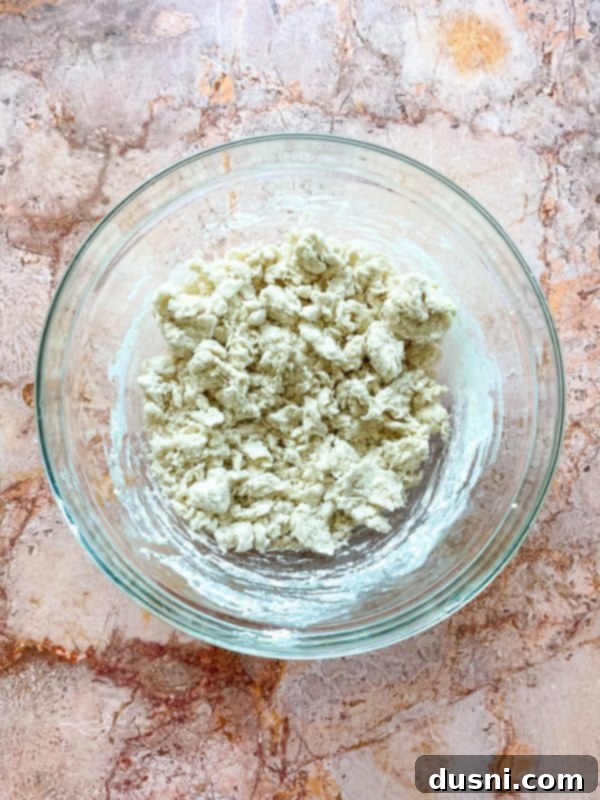
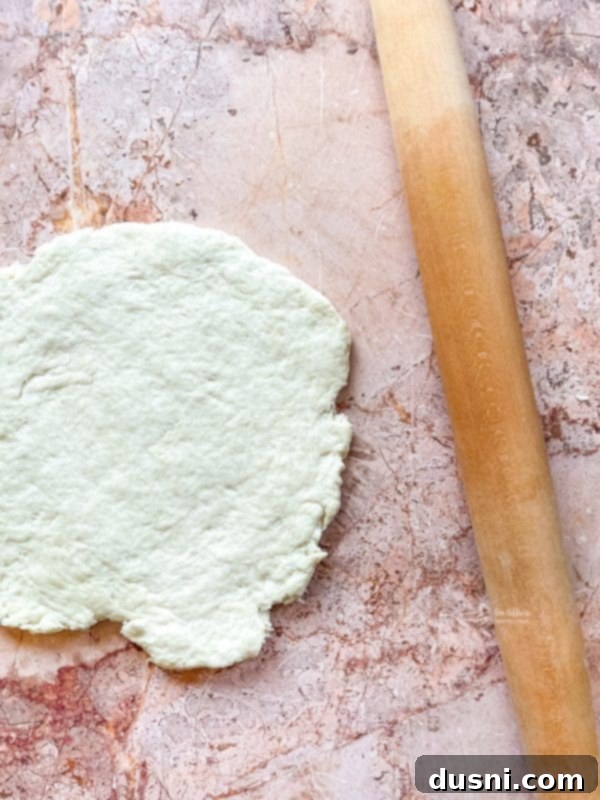
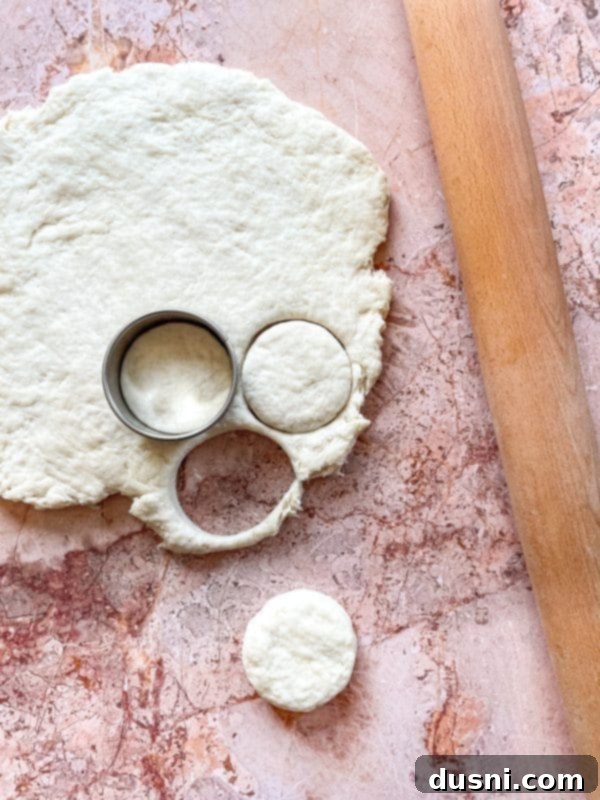
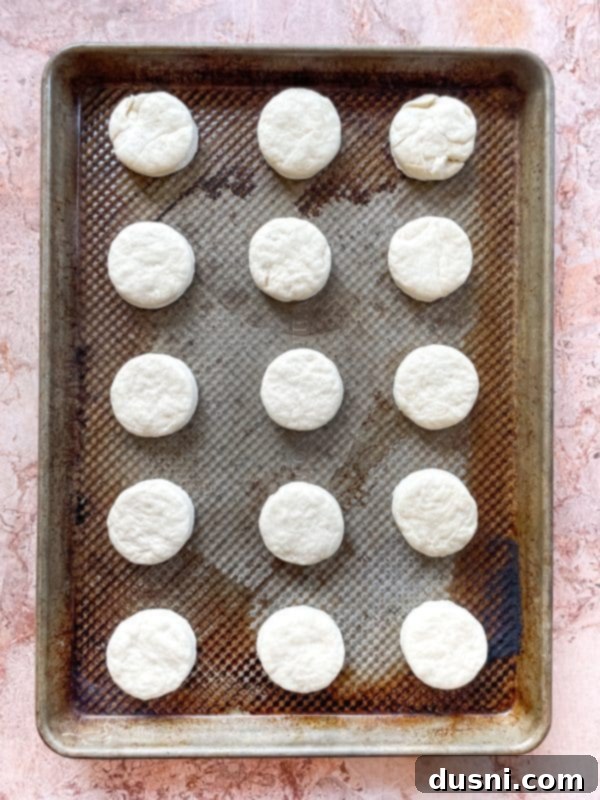
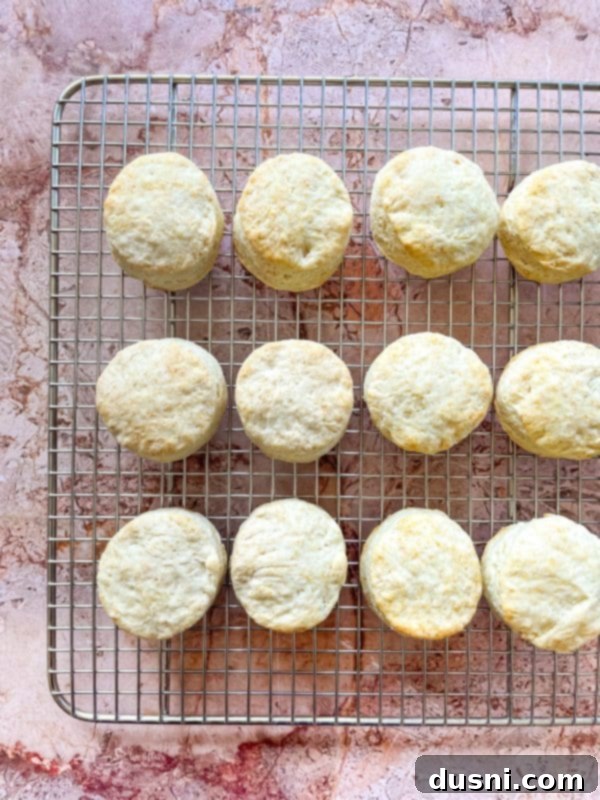
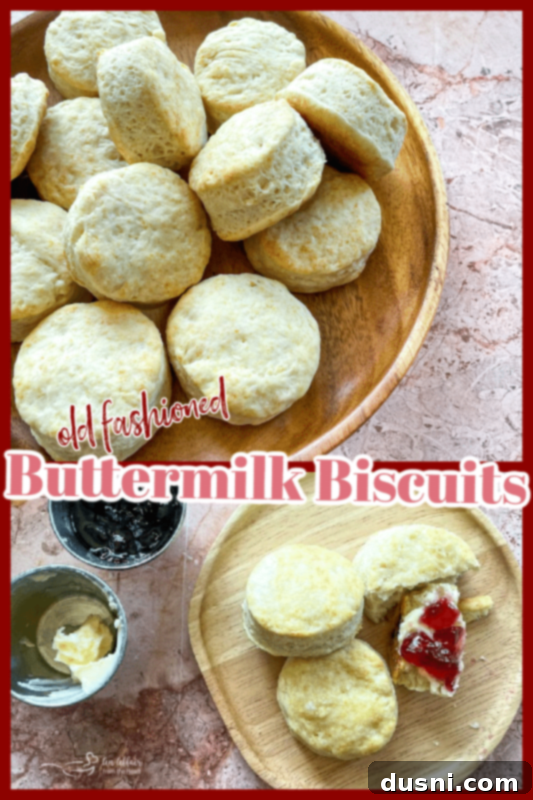
Love This Recipe? Pin It for Later!
Don’t let this incredible buttermilk biscuit recipe slip away! Make sure to save it to your favorite Pinterest recipe board before you go, so you can easily find it whenever that biscuit craving strikes or you’re planning your next comforting meal. Sharing is caring, and pinning helps others discover this deliciousness too!

Need buttermilk in a pinch? Check out our Easy Buttermilk Substitute Recipe!
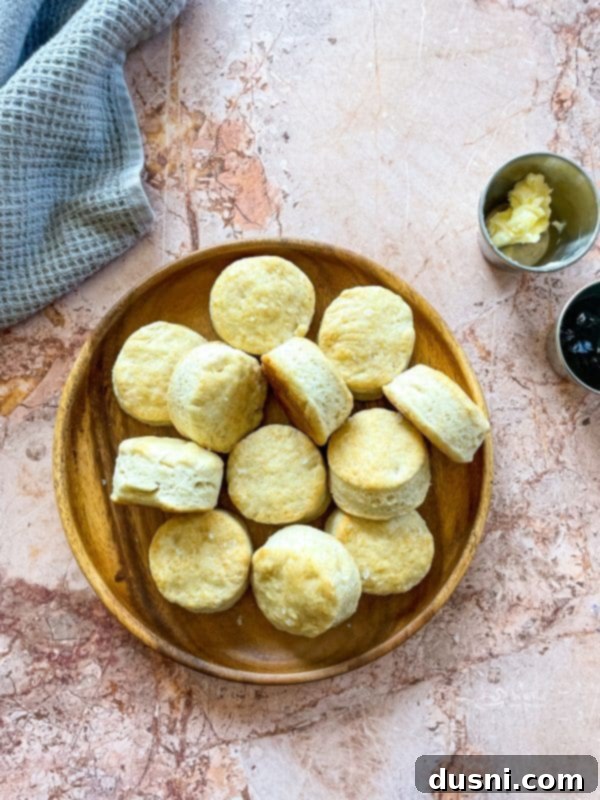
Frequently Asked Questions About Buttermilk Biscuits
Here are some common questions to help you master the art of buttermilk biscuit baking, ensuring your success every time:
-
What does buttermilk do in biscuits? Buttermilk is a magical ingredient in biscuits! Its acidity reacts with baking soda to produce carbon dioxide gas, which creates crucial lift and contributes to a wonderfully light, fluffy texture. Beyond leavening, buttermilk tenderizes the dough by breaking down gluten and imparts a delightful, subtle tangy flavor that is characteristic of classic Southern biscuits. It truly is the secret ingredient for superior results.
-
Is buttermilk or heavy cream better for biscuits? For traditional flaky, tender biscuits with a distinctive flavor, buttermilk is generally preferred over heavy cream. Buttermilk contains both acid (essential for reacting with baking soda) and a moderate amount of fat. Heavy cream is rich in fat but lacks the acidity needed for the chemical leavening process, which would result in a denser, less tangy biscuit unless another acid is added. The combination of acid and fat in buttermilk is perfect for biscuits.
-
Does buttermilk make a difference in biscuits? Absolutely, buttermilk makes a significant difference! It’s the key to achieving the signature texture and flavor of truly great biscuits. Skipping buttermilk or using a plain milk substitute without an added acid will result in flatter, tougher, and less flavorful biscuits. For the best buttermilk biscuits possible, using real buttermilk (or a proper homemade substitute) is non-negotiable and essential for authentic taste and texture.
-
Why use shortening instead of butter? This often comes down to personal preference and tradition. Shortening, like Crisco, has a higher melting point than butter. This means it stays solid longer in the oven, creating more steam pockets and thus incredibly distinct, flaky layers. Many traditional recipes, including my grandmothers’ pie crusts and biscuits, always used Crisco for this very reason. While butter offers a richer flavor, shortening excels in delivering that light, almost ethereal flaky texture so prized in Southern biscuits.
-
Can I make biscuits ahead of time? Yes! You can prepare the dough and cut out the biscuits, then place them on a baking sheet and freeze until solid. Once frozen, transfer them to an airtight freezer bag for up to 3 months. When ready to bake, place frozen biscuits on an ungreased baking sheet (no need to thaw) and bake as directed, adding a few extra minutes (usually 2-5 minutes) to the baking time. This is a fantastic way to enjoy fresh biscuits anytime.
Creative Twists: Substitutions and Variations
While these old-fashioned buttermilk biscuits are perfect as is, they also serve as a wonderful base for creative variations. Feel free to experiment with these ideas to personalize your batch and explore new flavor profiles:
- To add more savory flavor, mix in dried or fresh herbs like finely chopped chives, rosemary, thyme, basil, or oregano to the dry ingredients. A tablespoon of finely chopped fresh herbs or a teaspoon of dried herbs works beautifully, adding an aromatic touch.
- Make cheesy biscuits by folding in ½ to ¾ cup of shredded cheddar, Parmesan, or a blend of your favorite cheeses with the dry ingredients before adding the buttermilk. This adds a delicious savory depth and a gooey center.
- For a touch of sweetness, add a tablespoon or two of granulated sugar to the dry ingredients along with the flour mixture. You can also brush the tops with melted butter and sprinkle with cinnamon sugar before baking for a dessert-like biscuit.
- Introduce a smoky and savory element by adding some cooked and crumbled bacon bits or finely chopped ham to the dough. This is especially delicious for a hearty breakfast or brunch.
- Experiment with whole wheat flour: You can substitute up to half of the all-purpose flour with whole wheat flour for a nuttier flavor and added fiber, though this may slightly alter the texture, making them a bit denser.
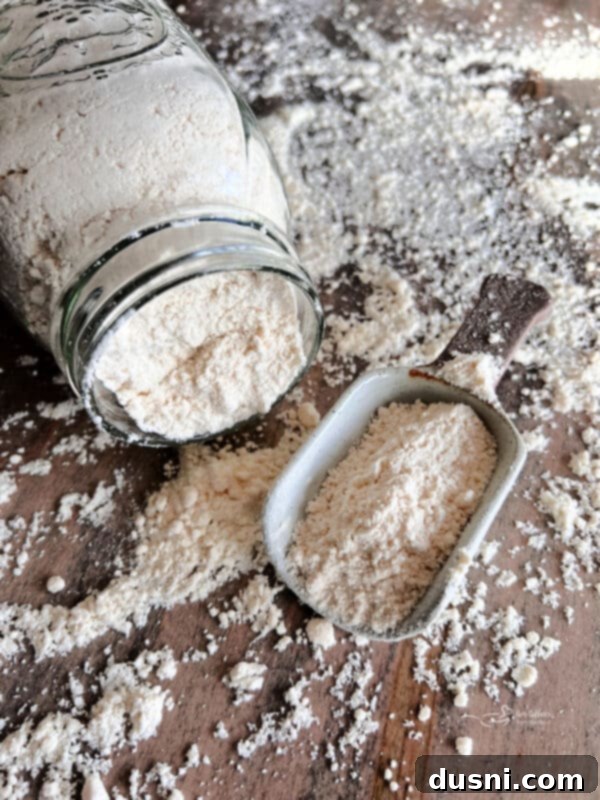
Looking for another homemade staple? Learn How to Make your Own Bisquick Baking Mix!
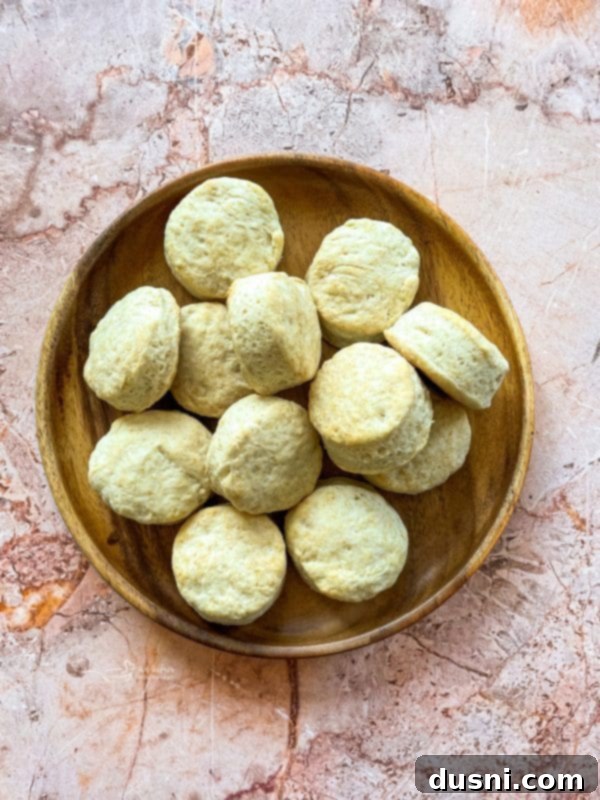
Expert Tips & Tricks for the Best Buttermilk Biscuits
Achieving consistently perfect biscuits—light, flaky, and tender—is easier with a few insider tips and tricks:
- Store Leftovers Properly: To keep leftover biscuits from drying out, store them in an airtight container or freezer bag at room temperature for up to 2-3 days. For longer storage, freeze them (see freezing tips above). Reheat gently to restore their fresh-baked quality.
- Serve Warm for Best Experience: Biscuits are always best served warm. Reheat them quickly in the oven (around 300°F/150°C for 5-7 minutes) or microwave (short bursts) until heated through. While they are still good at room temperature, the warmth truly brings out their tender texture and rich flavor.
- No Need for Lined Baking Sheets: Unlike some baked goods, biscuit dough can go straight onto an ungreased cookie sheet. The fat content in the biscuits, combined with the high baking temperature, usually prevents sticking, and the direct contact with the hot metal helps create a crisp, golden bottom.
- Consider a Food Processor for Mixing: If you find cutting in the shortening by hand challenging or prefer a quicker method, a food processor can be a great tool. Pulse the flour and shortening a few times until the desired crumbly texture is achieved. Be careful not to overprocess, or you’ll lose the flaky layers.
- Homemade Buttermilk Substitute: If you’re out of buttermilk, you can easily make your own. Add 1 tablespoon of white vinegar or lemon juice to a liquid measuring cup, then fill it up to the ¾-cup mark with regular milk (any kind works, but whole milk is best for richness). Let it sit for 5-10 minutes until it slightly curdles. This DIY version works perfectly for this recipe.
- Brush Tops for Golden Finish: For an extra golden-brown and slightly crispier top, lightly brush the tops of the biscuits with a little extra buttermilk or melted butter before baking. This adds a beautiful sheen and enhances browning, making them even more appealing.
- Avoid Over-Kneading: This is perhaps the most crucial tip! Over-kneading develops the gluten in the flour, leading to tough, chewy biscuits instead of tender, flaky ones. Knead just enough to bring the dough together, about 20 gentle turns, until it’s cohesive but still soft.
- Keep Ingredients Cold: Ensure your shortening and buttermilk are very cold. Cold fat creates pockets that expand into steam during baking, contributing significantly to those desirable flaky layers. Cold ingredients prevent the fat from melting too early.
- Don’t Twist the Cutter: When cutting out your biscuits, press the cutter straight down and lift straight up. Twisting the cutter can seal the edges of the biscuit, which inhibits its ability to rise tall and flaky, resulting in shorter, denser biscuits.
More Comforting Recipes to Love
If you’ve fallen in love with these Old Fashioned Buttermilk Biscuits, you’ll surely appreciate these other comforting and delicious recipes that feature biscuits or similar doughs. They’re perfect for expanding your repertoire of homemade delights:
- Crispy “Oven-Fried” Chicken in a Biscuit Sandwiches (pictured above) – A hearty and satisfying meal perfect for any time of day.
- Pumpkin Spice Biscuit Donuts – A delightful sweet treat, especially perfect for fall breakfasts or desserts.
- Cheesy Cornbread Drop Biscuits – A savory twist on biscuits, offering a delightful texture and cheesy goodness.
- Italian Cheese Bombs (made with biscuit dough) – An irresistible appetizer or snack that’s quick and easy to prepare.
- Red Lobster Cheddar Bay Biscuits – Recreate this popular restaurant favorite at home with our easy copycat recipe.
- Chicken in a Biskit Dip – A fun, flavorful dip perfect for parties and gatherings.
- Black Pepper Drop Biscuits – A simple, peppery biscuit that offers a unique savory kick, great with stews or soups.

This easy biscuit recipe, originating from 1964, remains a beloved classic today, almost 60 years later. Its enduring popularity is a testament to its simple ingredients and consistently delicious results. Whether you choose to bake up a batch to soak up your favorite sausage gravy, slather them with homemade jam or fruit jelly, or simply enjoy them warm with a pat of butter, these biscuits are guaranteed to bring a smile to your face. They are more than just food; they are a piece of comforting culinary heritage, easy enough for any home baker to master, and a true taste of timeless tradition.

LIKE THIS RECIPE?
Don’t forget to give it a ⭐️⭐️⭐️⭐️⭐️ star rating and
leave a comment below the recipe!
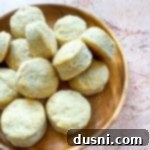
Print Recipe
Old Fashioned Buttermilk Biscuits
Equipment
-
KitchenAid Gourmet Rolling Pin, One Size, Red
-
Spring Chef Dough Blender, Top Professional Pastry Cutter with Heavy Duty Stainless Steel Blades, Medium Size, Black
-
Biscuit Cutters Set, Stainless Steel Circle, 5 Pieces
-
13×18 Half Sheet Pan
Ingredients
- 1 ¾ + 2 Tablespoons All-Purpose Flour unsifted
- 3 teaspoons baking powder
- ¼ teaspoon baking soda
- 1 teaspoon salt
- ¼ cup Crisco shortening
- ¾ cup buttermilk
Instructions
-
Preheat oven to 450 degrees Fahrenheit (230°C).
-
In a large bowl, stir together flour, baking powder, baking soda, and salt until well blended.
-
Cut in shortening with a pastry blender until the mixture resembles coarse crumbs with pea-sized pieces of shortening.
-
Gradually stir in buttermilk with a fork until the ingredients are just moistened and a shaggy dough forms. Do not overmix.
-
Turn the dough out onto a lightly floured surface. Knead gently about 20 times to bring the dough together.
-
Roll dough into a uniform ½-inch thickness. Using a floured 2-inch biscuit cutter, cut into rounds by pressing straight down and lifting.
-
Place biscuit rounds onto an ungreased cookie sheet, close together for softer sides, or spaced apart for crispier edges.
-
Bake for 8-10 minutes, or until golden brown on top and cooked through. Serve warm.
